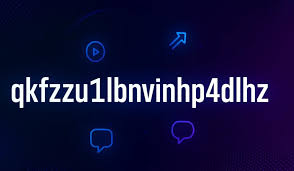In the sprawling world of the internet, few things look as mysterious as a long string of random letters and numbers — take qkfzzu1lbnvinhp4dlhz
, for instance. Is it a secret key, a forgotten password, or a hidden code? In reality, qkfzzu1lbnvinhp4dlhz exemplifies a class of identifiers quietly powering our digital lives. In this article, we’ll explore what it likely means, how systems use such codes, why it’s caught attention lately, and what you should keep in mind when encountering it.
What Is qkfzzu1lbnvinhp4dlhz?
At its core, qkfzzu1lbnvinhp4dlhz is most likely a machine‑generated alphanumeric token: a random, unique string created by software rather than human design. It doesn’t carry a natural language meaning. Instead, its value lies in being:
- Unique — it’s highly unlikely to collide with another token.
- Opaque — it reveals nothing about the underlying data or system.
- Secure — difficult to guess or regenerate from reverse engineering.
Such tokens are commonly used by systems to label, reference, or authenticate without exposing sensitive or guessable data.
Where and How Are Codes Like This Used?
Strings like qkfzzu1lbnvinhp4dlhz frequently show up in:
- Session tokens and authentication.
Web and mobile apps often issue random tokens when users log in, so that subsequent requests can be verified without resending passwords. - File, resource, or API identifiers.
When you share a file via cloud services, the link might include a random string that serves as the unique identifier of that file or resource. - Tracking and analytics.
Marketing platforms embed unique tokens in URLs or campaign links to trace clicks, conversions, or user journeys without tying them to personal data. - Hidden tags or niche “hashtags.”
Especially in social or content platforms, codes can act as private or semi-private tags that group content in a controlled way, invisible to mass searches. - Backend internal mappings or database keys.
Instead of using simple, guessable IDs (like “user1234”), systems may use long opaque keys like qkfzzu1lbnvinhp4dlhz behind the scenes.
In short: you may not see them often, but these strings silently glue together many parts of the web.
Why Has qkfzzu1lbnvinhp4dlhz Captured Attention?
Although strings like this have existed for years, qkfzzu1lbnvinhp4dlhz in particular has drawn notice lately. Possible reasons include:
- SEO and curiosity experiments. Some bloggers or SEOs inject obscure identifiers into pages to test how search engines index them, or to generate content that stands out.
- Mystique and virality. The unusual nature of such a code encourages speculation (Is it a backdoor? A hidden key? A meme?). That drives social media chatter and more sites referencing it.
- Tracking adoption of modern digital practices. As privacy, encryption, and opaque identifiers gain importance in web design, more systems adopt strings like qkfzzu1lbnvinhp4dlhz—so they become slightly more visible.
- Backlink or meta‑tag placement. Some websites place it in footers, metadata, or sitemaps—not for humans, but to seed inbound links or test indexing behavior.
Because of these dynamics, qkfzzu1lbnvinhp4dlhz acts as both a technical artifact and a kind of digital folklore.
Is qkfzzu1lbnvinhp4dlhz Safe or Suspicious?
On its own, qkfzzu1lbnvinhp4dlhz is harmless. It’s just a string. But safety depends entirely on context. Here’s a quick guide:
- Likely safe contexts:
- Embedded in URLs of trusted services (cloud storage, web apps you use).
- As a parameter in API calls for apps you trust.
- In metadata or source code of sites you know are credible.
- Potential red flags:
- In emails or messages from unknown senders, especially with links.
- If used in scripts or files you didn’t expect.
- If it’s part of a domain or URL you don’t recognize, perhaps as a redirect.
If you see it in a suspicious email or link, especially with attachments or requests, do not click without verifying the source. Use antivirus or URL scanning tools to examine it.

What Should You Do if You Encounter It?
Here’s how to respond:
- Observe context. Where did you see qkfzzu1lbnvinhp4dlhz? In a link? In source code? In a message?
- Check origin. Is it tied to a service you trust? Is the domain valid? Is SSL present?
- Avoid blind clicks. Especially if unsolicited.
- Scan or analyze. Use online tools or antivirus to inspect unfamiliar URLs or file attachments.
- Ignore if benign. In trusted contexts, these tokens are just part of how the system works—they often can be safely ignored.
The Broader Implication: Hidden Architecture of the Web
What qkfzzu1lbnvinhp4dlhz reminds us is that a lot of the web isn’t meant for humans to read—it’s meant for systems to orchestrate. The better we understand these invisible building blocks, the more transparent and navigable the digital world becomes.
- Privacy and security lean heavily on opaque identifiers, because revealing structure can open vectors for attack.
- Scalability demands randomness; simple auto-increment IDs don’t scale without collision risk or guessability.
- Traceability in analytics and marketing often needs identifiers decoupled from personal data.
So while you may never “use” qkfzzu1lbnvinhp4dlhz, chances are your devices, apps, or websites have interacted with something equally inscrutable. Recognizing that helps demystify many quirks of online behavior: odd links, cryptic URL parameters, or invisible tags.
Conclusion
The string qkfzzu1lbnvinhp4dlhz may look like gibberish, but it’s emblematic of how modern digital systems communicate and secure themselves. Whether used for sessions, file links, tracking, or internal identifiers, random alphanumeric tokens are everywhere behind the scenes. The recent buzz around qkfzzu1lbnvinhp4dlhz highlights how even meaningless‑looking codes can spark curiosity, experiment, and reflection on what powers the web.
If you see it somewhere: pause, check the context, and act based on trust. But don’t be afraid—sometimes, the strings we don’t fully understand are just doing important work in silence.


